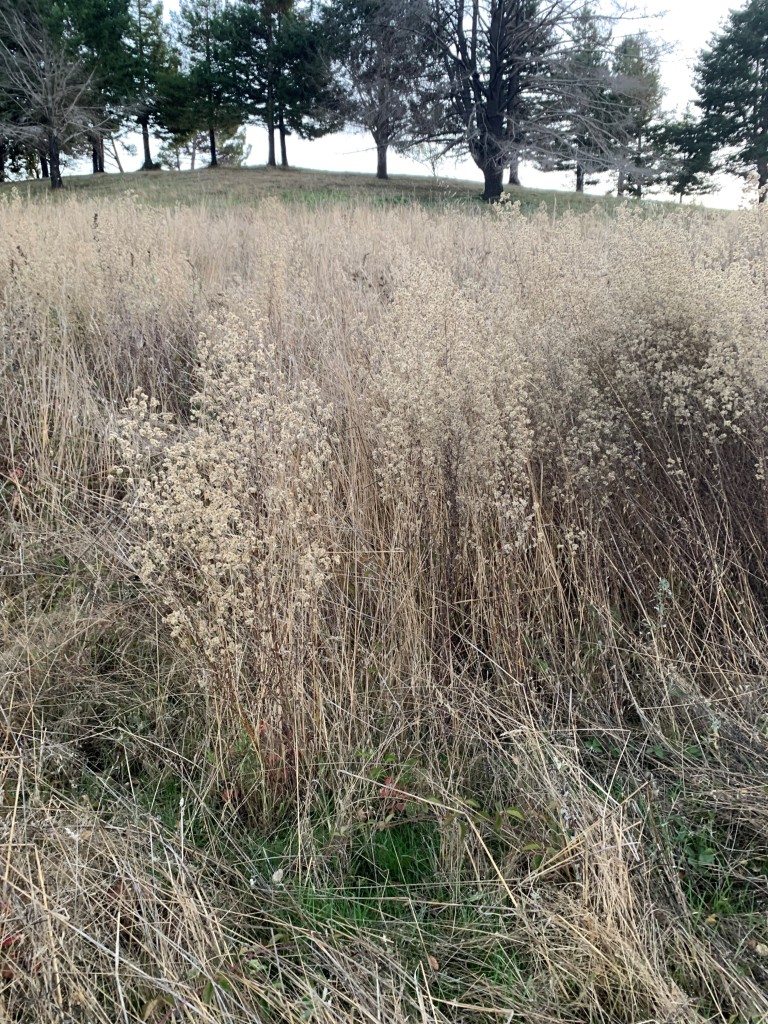It has been blowing and blustery with so much rain that the ground is oozing and bubbling, and newfound springs are pouring from gopher holes across the entire landscape. The creeks do more than murmur: they rush and shout. The ocean has been loudly roaring with unfathomably massive waves, more foam showing than water. People tire of no sun, but all are thankful for the rain, we will perhaps never again complain of rain…lucky us for the wetness, for hydration of the ground, moistening of the forest duff, the slicking of the rocks and mud, and the paddling of the 11 ring necked ducks across Lake Molino.
Moon Growth
Last night, the cloud cover slackened, and the moon was as bright as the sun has been for many days. Moonglow shining through drizzly fog. Owls hooting. Deciduous trees awaken even at night, the quickening of sap, the fattening of buds.
Dazzling Green
We all this sprinter. The trees are bare and the grass is turning Electric Green. The meadows around Molino will get 6’ tall this spring, if we let them. In the past week, in the aisles between the orchard trees and the margins of the farm fields the grass doubled to 2’ tall. It has become unbearably wet to trod off trail or road, shoes and pant legs quickly soaked, even when it hasn’t rained for hours (rare).
Flowers Unfurling
The first orchard trees are in bloom – the first plums are a’flowerin’. The quince bushes aren’t far behind. The orchard understory is thick with 2’ tall (!) someplaces lush cover crop: fava beans, oats, and vetch. The wide, blue-green fava bean leaves are lush and heavy, nodding as the first white flowers emerge in whorls along the stems. Under the trees, the Iberian comfrey is in full bloom, tempting the bumble bees, preparing them for the Big Bloom when we really need them. Borage, native strawberries, and weedy radish are also offering nectar in the understory. Sprinter – a time for the vibrancy and lushness of the herbaceous world.
Pile It Up
There’s not much going on with the farming, but the Molino folks have been ‘at it’ with land management. We’re not quite done burning all the biomass we piled up this last and the prior year, but we’re close. Fourteen piles ate up lots of stuff into relatively nothing, doing work at the same time. We made the burn piles on top of brush that we didn’t want, so the stumps were thermically removed, saving future work. Often, these piles went through both weekend days with shifts of energetic people tending and adding to them. Each branch we torch is one less to add to the future wildfire, and we work apace to make the farm more fire safe with the understanding that next summer could challenge us once again with an uncontrolled inferno. Meanwhile, we get soaked in the rain while the bonfires steam our clothes dry and keep us warm.
Chores
We can no longer rest. Although the short, dark, wet days still make us lazy, we must awake and enliven and get to work. After a 2-year hiatus, the meadow voles are back- good news for the riddance of gophers but bad news for the sweet bark of the young trees. Time to make bare the area around young tree trunks- the only way to keep the voles at bay. Also, many young trees pitched sideways must be propped. And…The Pruning! The Grafting! The Planting! Wow, is it ever time to catch up.
-this post simultaneously published at Molino Creek Farm’s website



























